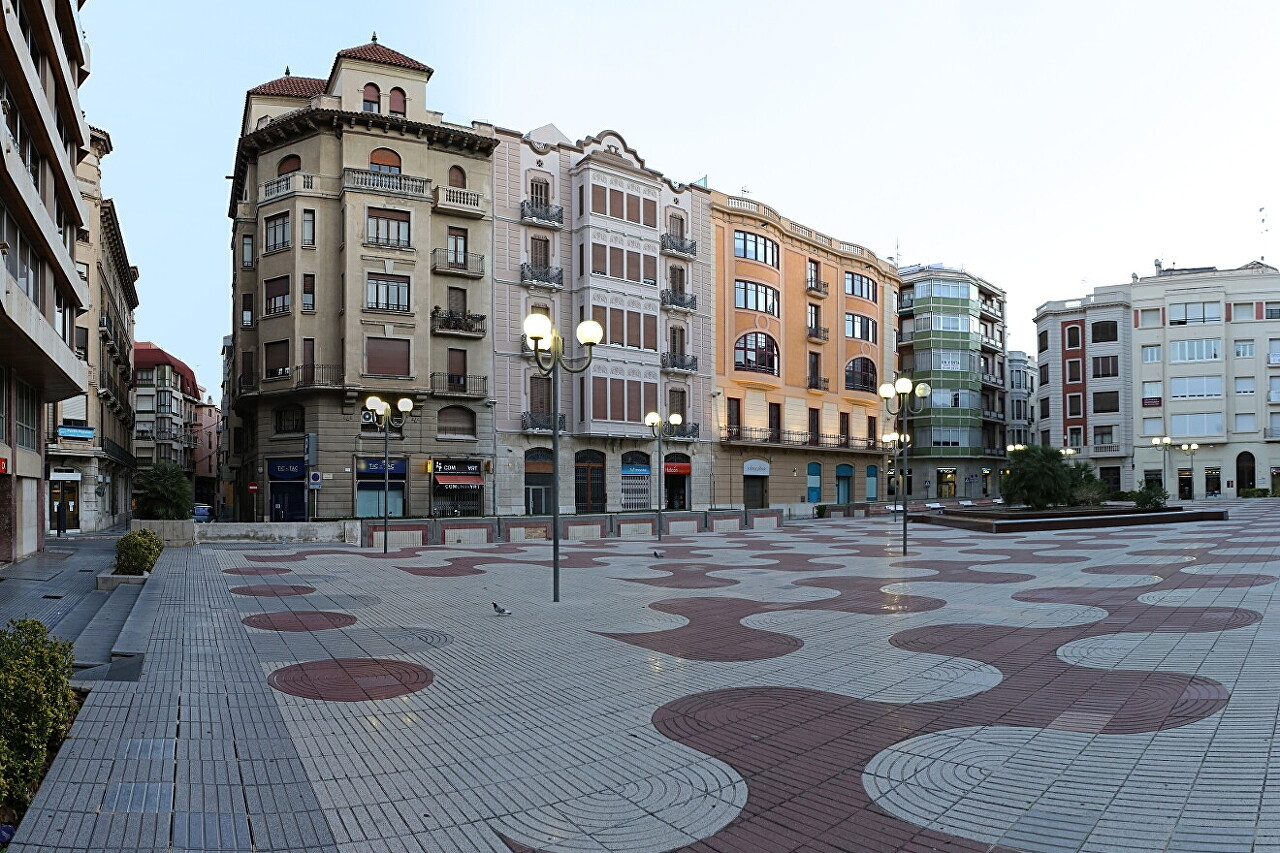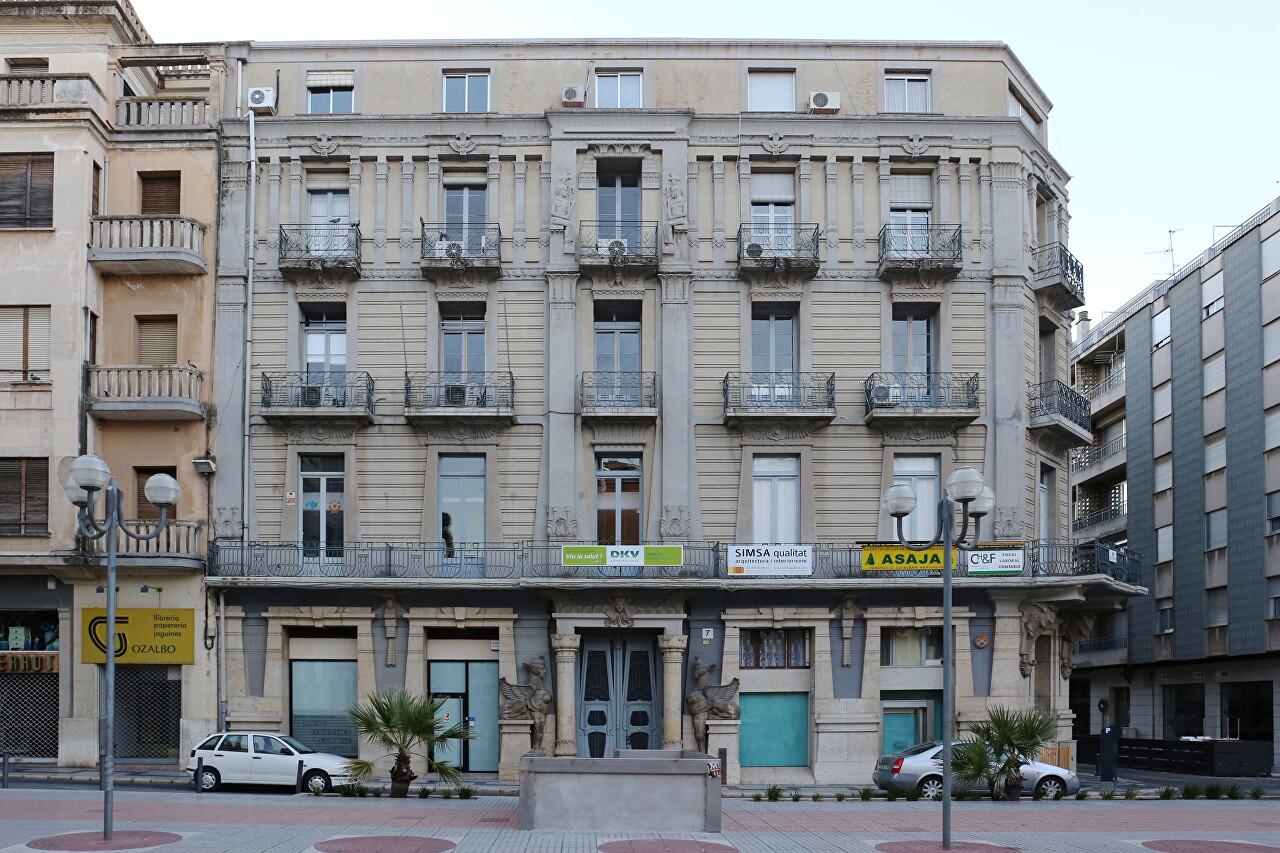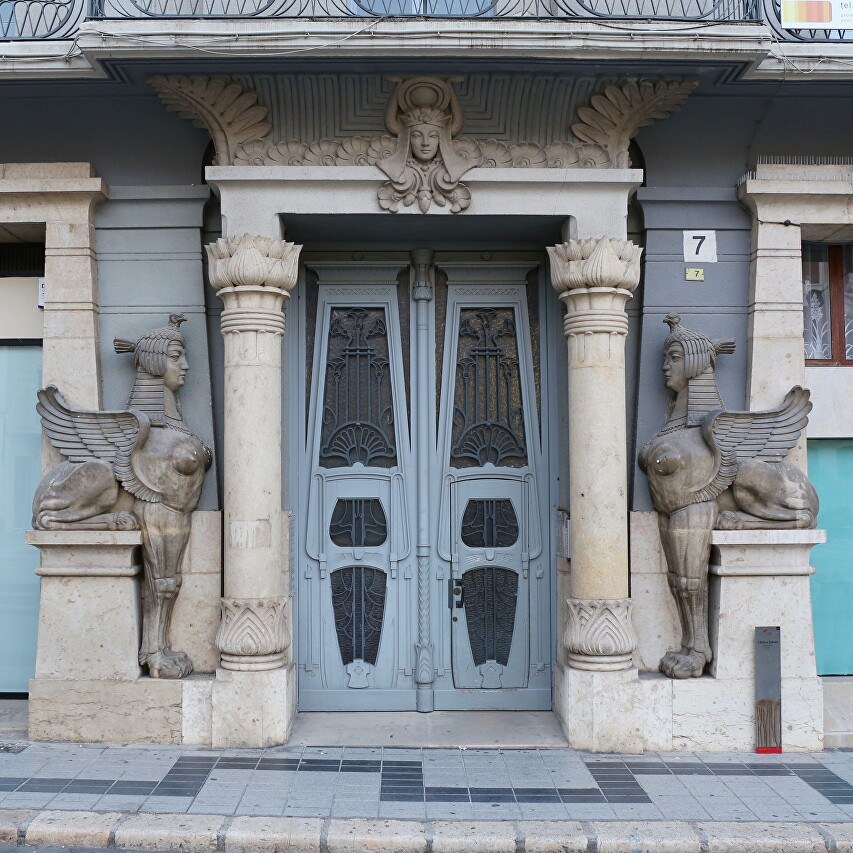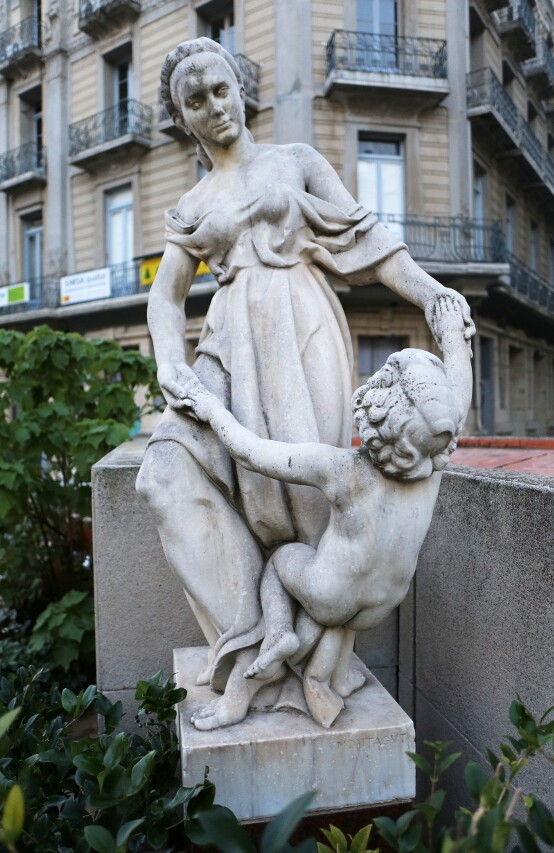Plaza de Alfonso XII, Tortosa
Torotosa, like any Catalan city, is replete with buildings from the turn of the 19th and 20th centuries, where you can see a wide variety of architectural styles and trends. Early in the morning, I set off on the local Modernism route. The development of the period 1890-1930 was carried out mainly around Plaza de Alfonso XII, this area became the bourgeois center of Tortosa. The middle building on the north side of the square, the Ballester House (Casa Ballester), attracts attention with its decor. The house was built in Art Nouveau style in 1911 and belonged to the family of olive magnate Ballister. The building on the right was added in 1931 by order of the same Ballester, already without architectural excesses. This is a typical representative of the purely Catalan trend of Noucentisme, which was popular from 1911 to 1931. Its adherents contrasted the" decadent and anarchic chaos "of modernity with" order, clarity, harmony, rationality, and moderation."

The opposite side of the square is undoubtedly decorated with the old building of the clinic, built in 1915 in the late Art Nouveau style with elements of historicism. The project was carried out by the architect Josep Maria Vaquer i Urquizú. The construction was commissioned by two Sabate medical brothers who were fond of ancient history and culture, which explains the design of the building based on ancient Egyptian motifs.

The portal is made by the sculptor Arnaldo Pi (Arnaldo Alemany Pi), it is decorated with two sphinxes in rather unusual poses - the back part lies on a pedestal, and the front legs rest on the ground. A separate question is caused by the birds on the head of the sphinx. With a bird on her head, the Egyptians depicted the goddess of the underworld Amentet, I think this is not the best image for the hospital.

In front of the clinic you can see the sculpture "Mother and Son" by Inocencio Soriano Montagut (Inocencio Soriano Montagut), installed in 1958.

Then I follow the Carrer de Ramon Berenguer IV, heading east, to Calle Cervantes, just a block away from the square.